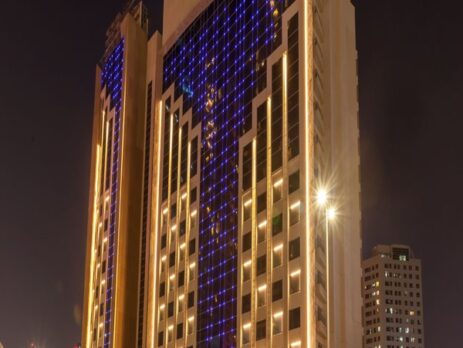views
Hotel lighting today goes well beyond basic illumination. In modern hospitality environments, lighting design is a key factor in creating mood, supporting guest navigation, and enhancing overall comfort. Lighting Design for Hotels plays a vital role in reinforcing a property’s identity and delivering a memorable experience. Properties like Telal and Kempinski show how thoughtful lighting choices can beautifully unite visual appeal with purposeful design.
The Role of Lighting in Hotel Environments
Lighting in hotels does more than illuminate spaces—it creates impressions, influences emotions, and supports how guests interact with the environment. Whether it’s the grandeur of a hotel lobby, the intimacy of a guest room, or the functionality of a corridor, lighting design must align with both architecture and human behavior.
Effective hotel lighting design addresses several layers:
-
Ambient lighting provides general illumination.
-
Task lighting supports specific functions like reading or dining.
-
Accent lighting highlights architectural details, artwork, or textures.
-
Decorative lighting contributes to the overall visual identity.
The integration of these layers defines the spatial experience and supports the needs of different zones within the hotel.
Telal Hotel: Tradition Meets Contemporary Lighting
Located in a tranquil desert setting, Telal Hotel merges traditional Emirati architecture with modern comfort. Its lighting design reflects this balance by emphasizing natural materials, soft shadows, and warm tones.
Key lighting design elements at Telal include:
-
Layered lobby lighting with chandeliers, recessed spots, and floor-level accents, creating a welcoming yet sophisticated atmosphere.
-
Subtle corridor illumination that guides movement without visual harshness.
-
Outdoor landscape lighting highlighting native plants, pathways, and water features, allowing the environment to remain usable and inviting after sunset.
By enhancing textures and using controlled color temperatures, the lighting reinforces Telal’s cultural theme while ensuring modern functionality.
Kempinski Hotel: Luxury, Precision, and Control
Kempinski hotels are known for their luxurious and contemporary interiors. The lighting strategy in these spaces is often built around creating mood, flexibility, and energy efficiency.
In Kempinski properties:
-
Smart lighting controls adjust brightness and color temperature throughout the day, enhancing comfort and supporting circadian rhythms.
-
Guest rooms feature dimmable ambient lighting with integrated task lights for bedside and work areas.
-
Dining venues use tailored lighting scenes to support different mealtimes and moods, from bright breakfast service to ambient dinner lighting.
Accents on textures—such as wall panels, stone surfaces, and sculptural details—are carefully lit to add visual depth. Lighting serves both the aesthetic and emotional dimension of the space, reinforcing the hotel’s commitment to guest well-being and design sophistication.
Expanding the Approach: Adagio, Royal Continental & Arcan
Other hospitality projects across the UAE and GCC continue to showcase the diversity of hotel lighting needs.
Adagio Hotel Apartments – Palm Jumeirah
Lighting in serviced hotel apartments like Adagio balances the feel of residential warmth with hospitality standards. Recessed downlights, warm LED strips, and low-glare fixtures support long-term guest comfort while maintaining brand consistency across rooms and shared areas.
Royal Continental Hotel
Designed for business and leisure travelers, this hotel uses lighting that shifts from functional to atmospheric depending on the zone. Public spaces are brighter and more open, while guest rooms and dining areas transition into softer, more calming environments.
Arcan Hotel Apartment
This hotel-apartment hybrid uses compact lighting solutions that maximize comfort within tighter spatial layouts. Here, LED solutions are paired with energy-saving strategies to support both usability and sustainability.
Trends Influencing Modern Hotel Lighting Design
-
Human-Centric Lighting (HCL)
Lighting that adapts to circadian rhythms is increasingly used in guest rooms and wellness areas. Dynamic white lighting supports natural sleep-wake cycles, improving guest rest and comfort. -
Smart Controls & Automation
Hotels are adopting integrated lighting systems that respond to time of day, occupancy, or preset scenes. This not only enhances the guest experience but also improves energy efficiency. -
Sustainability
Low-energy LED fixtures, daylight integration, and motion-sensor controls are becoming standard, helping hotels meet sustainability goals and reduce operational costs. -
Visual Branding Through Light
Lighting design is also used to reinforce a hotel’s visual identity. Custom fixtures, branded color temperatures, and tailored lighting scenes ensure that lighting aligns with brand values and guest expectations.
Thoughtful Lighting Design Enhances Guest Experience
Whether it’s the calm of a retreat like Telal, the urban elegance of Kempinski, or the flexibility of apartment-style living at Adagio, lighting design remains a silent yet powerful contributor to the hospitality experience.
By approaching lighting as both a technical and emotional tool, designers can shape how guests feel, move, and remember a space. The right lighting doesn’t just light a room—it adds narrative, character, and memory.




Comments
0 comment